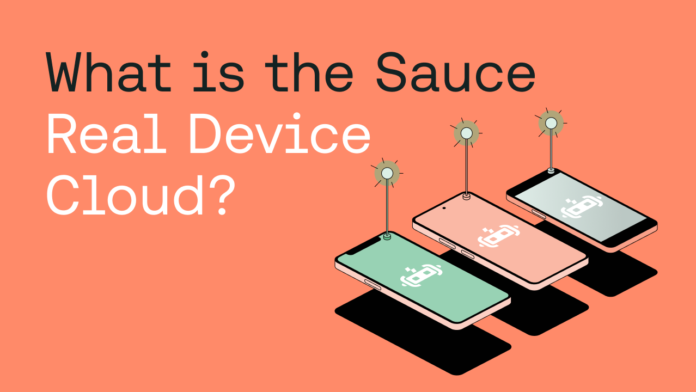In today’s fast-paced digital world, mobiles have become an indispensable part of our lives. Whether it is revolutionizing how we communicate through video calls and instant messaging, managing our hectic schedules with calendars, providing news about the latest happenings, or giving access to entertainment on the go, there is nothing mobiles can’t do.
This is evident from the recent study by Statista that predicts that the number of mobiles is expected to reach 18.22 billion in 2025. While this seamless integration of mobiles into our lives makes us happy, it has become a challenge for testing teams in organizations.
With so many mobile devices in the market with different screen resolutions, sizes, functionalities, CPU power, and memory features, it has become critical to ensure that all applications work perfectly well on all devices.
However, buying and maintaining all the necessary devices for real device testing requires vast budget allocation. While large-scale companies might be able to do so, mid-size and small companies are often left looking for alternatives as this is not affordable.
To solve this issue, real device cloud has been introduced in the market today, where testers get access to multiple iOS, Android, and other mobile devices to test apps in real-world conditions and get accurate feedback about app performance.
If you wish to know more about real device cloud, you are at the right place. Explore this topic with us and find out what real device cloud is, its benefits and the best platform to test all your mobile applications.
What Is A Real Device Cloud?
As explained earlier, a real device cloud is the testing environment where QA teams and testers access hundreds of Android, iOS, and other mobile devices to test mobile applications in a real-world scenario.
Pre-release testing on a real device cloud helps organizations deliver apps that provide a good user experience by testing on various device/OS combinations. Generally, these real device clouds provide access to new and legacy devices.
They further integrate with popular mobile testing frameworks like XCUI Test, Appium, and Espresso so that you can check the usability, performance, and functionality of all your applications on the devices that users will ultimately use without needing them physically.
By using a real device cloud, organizations ensure that the testing process is efficient and adequately covers all the target customers. It helps them release mobile applications with no glitches and provide an optimal experience to all their customers.
Benefits of Testing Applications in Real Device Cloud
By leveraging a real device cloud for mobile app testing, organizations can enjoy the following benefits:
- Provides Access Anywhere
Traditionally, testing applications before release on mobile devices required a dedicated on-premise infrastructure that provided limited access to a specific location. It made testing inconvenient and inflexible for global teams.
With a real device cloud, this disadvantage can be solved as it goes beyond locations and provides access to testers to test applications from anywhere around the globe. This has benefitted remote teams and global organizations as their workforce is dispersed in different locations.
- Conduct Testing Anytime
With its round-the-clock availability, a real device cloud allows testers to perform testing according to their convenience. It accelerates testing as multiple teams can work simultaneously as they do not have to wait for device availability or schedule their tests.
This is particularly helpful to global teams working in different time zones. They can access a real device cloud as per their working shift and update other teams about the testing progress through shared test results and coordinate on solving bugs and glitches in applications.
- Eliminates The Cost Of Setting up Device Lab
Maintaining an on-premise device lab can be costly and time-consuming. With a real device cloud, you can drastically eliminate the costs of setting up and maintaining a device lab. There is no longer a need to buy and maintain physical mobile devices and manage their inventory.
By partnering with a real device cloud platform, the testing teams can implement testing methodology without delay. It also reduces the risk of losing sensitive information when a physical device is lost, stolen, or misplaced.
- Get Reliable Testing Results
When it comes to testing mobile applications, QA teams also prefer to test on emulators. However, while emulators act like real devices, they run on computers. As a result, the testing result from emulators is less reliable than real devices.
With real devices, you can test your mobile applications on real-world conditions like device overheating and losing battery life, which is impossible otherwise. Thus, testing is more efficient and reliable through a real device cloud that hosts multiple real devices.
Choosing The Best Platform for Real Device Cloud -TestGrid
Now that you know how advantageous a real cloud device can be, choosing the right platform for all your testing needs is important. With a plethora of options in the market today, the choice can be tough. But let us make it simple for you!
Today, most organizations prefer TestGrid for all their testing needs as it is an AI-based intelligent and cost-effective end-to-end testing platform that allows companies to streamline their testing process and detect application bugs early in the development stage.
With TestGrid’s real device cloud, you can perform app testing on a variety of Android and iOS real devices like Samsung, One Plus, iPhones etc. so you can get a 100% real user experience.
Using this real device cloud, you can perform mobile app testing on various device combinations and look at what real-world conditions your application will face.
The real device cloud further provides cross-browser testing functionalities where you can create tests in a scriptless manner and run them simultaneously on multiple browsers to speed up the entire process.
By integrating performance engineering into the CI/CD processes, TestGrid also allows you to find issues in their application during the early phases of the software development life cycle so that you can be assured of the app’s dependability when launched for the public.
Closing Thoughts
When you use a real device cloud, it is for the best as it enhances your mobile application’s overall user experience and performance. With the real device, you can check for user interfaces like clicks and scrolls, network conditions like 4G and 5G, sensors, CPU usage, and battery life to deliver a flawless application that responds to the changing user requirements.
By leveraging the TestGrid platform, you can perform app testing over a real device cloud. It provides end-to-end testing and lets you analyze all complex features of any mobile application with its real device cloud.
Furthermore, you can run your tests by logging into your account from anywhere and anytime, conduct mobile app testing and cross-browser testing and get performance metrics all under one roof without installing any third-party applications. So, book a demo on TestGrid today and reduce your application’s release-to-market time!

